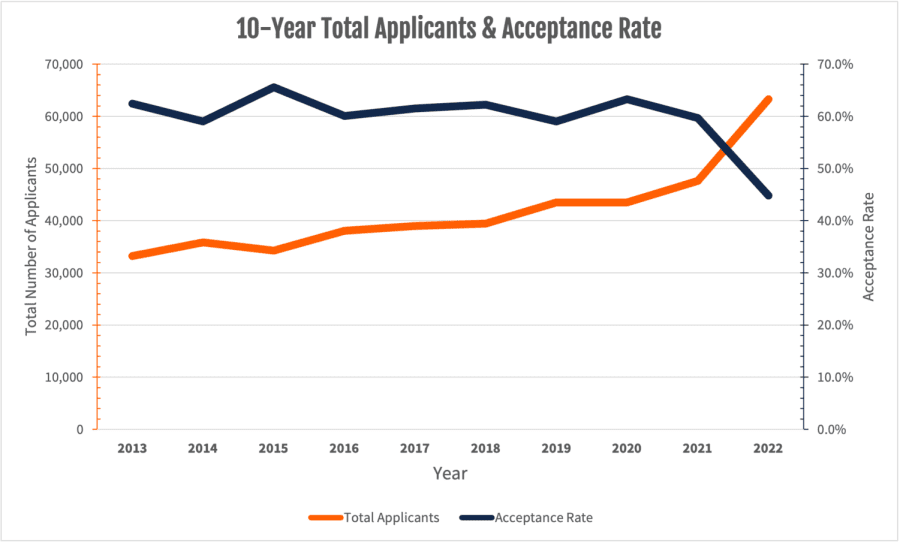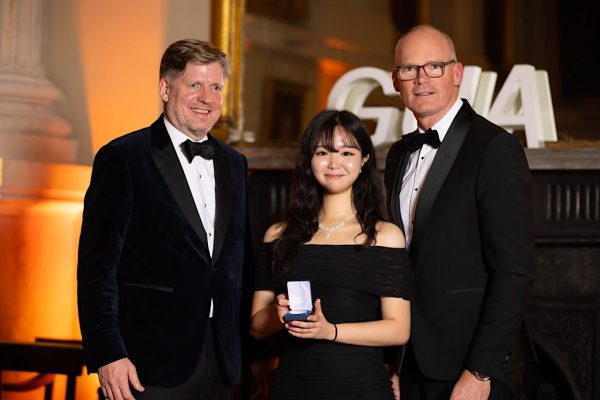UI acceptance rate drops to lowest on record as number of applicants rises
Sep 21, 2022
Along with the second-largest first-year class since its founding, the University saw a significant spike in total applicants during the 2022 admissions cycle, leading to an acceptance rate of just 44.8%.
The statistics, released in the 10th Day Report by the Office of Enrollment Management on Sept. 8, come as a stark contrast to the University’s past acceptance rates, which averaged 61.4% over the previous nine years.
As class size has remained relatively constant, this dramatic drop is attributed to the 33% increase in total applicants in the most recent admissions cycle.
Andy Borst, director of undergraduate admissions, said the biggest factor for this increase in applicants was the addition of new methods for applying to the University.
“The biggest difference this year was joining the Common App,” Borst said in an email.
Get The Daily Illini in your inbox!
Though the numbers are drastic, this change was anticipated by the Office of Enrollment Management.
“Almost all other Big Ten universities (except Rutgers) are now on the Common App, so we’re able to use their data to estimate how much our applications would increase,” Borst said. “We estimated an 18-22% increase in applications, however, the actual increase was 33%, or over 15,000 more applications compared to fall 2021.”
The University has also seen a decline in yield, the percentage of students offered admission that choose to attend, though this has been more steady.
“When students do not accept our offer of admission, the number one reason is consistently cost,” Borst said. “Students in the state of Illinois are some of the most heavily recruited students in the country. Some colleges are offering significant discounts, with the misnomer of ‘merit scholarships.’”
To combat the decreasing yield rates, the University has implemented tactics to better assist potential students facing financial barriers to entry, most notably with the creation of the Illinois Commitment program.
“We have made major investments in institutional aid, increasing from $20 million in 2009 to over $112 million in 2021, but there remains a notable unmet gap (in need-based financial student aid) for our students,” Borst said.
According to Borst, the University created the Illinois Commitment program to cover tuition and fees for resident students from families with an income below $67,100 per year, approximately the state median.
The University’s Recruitment & Admissions Plan for the 2023 admissions cycle noted that “as a land-grant university and part of Illinois’ flagship system, (the University’s) first priority is to enroll resident students and then supplement enrollment with high-achieving non-residents and international students.”
Borst explained that despite enrolling more out-of-state and international students within the past two cycles, the University is still committed to Illinois residents.
“Even with being more competitive in admissions this year, the admit rate for Illinois residents was still 20% higher than nonresident and international students,” Borst said.
Borst further mentioned the University is still expecting another increase in total applicants for the 2023 admissions cycle, though it is expected to be less substantial.






